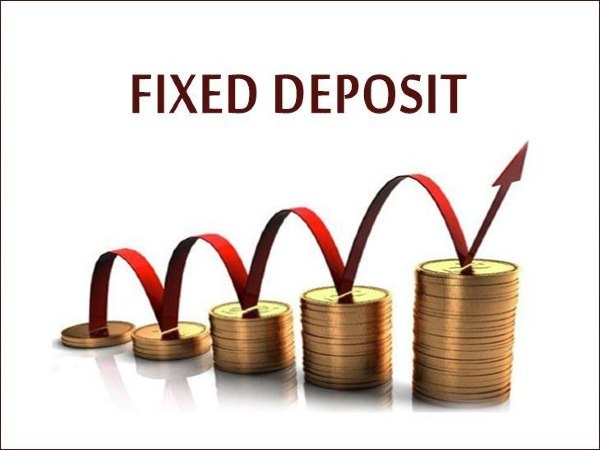Best Investment Options for Salaried Person in India 2023
If you are looking for a safe investment option, then you may be interested in some of the best investment options available in 2023 in this article: Inves
- by Gaurav Grover 2023-07-04 10:29:20
If you are a salaried person looking for investment options in 2023, you have several options to grow your hard-earned money wisely. There are various investment schemes for salaried employees in India, ranging from traditional options like fixed deposits, recurring deposits, Flexi Deposits, National Pension Plans (NPS) and Unit Linked Insurance Plans (ULIP), to more contemporary options like investing in equities and cryptocurrencies. To make the most out of your investment planning for employees, it’s crucial to choose the best investment options for salaried people in 2023.
The most suitable investment option for an individual generally depends on four key factors: their risk appetite, time horizon, liquidity needs and tax bracket. In addition, investors may consider multiple investment options corresponding to different financial objectives, each with different time horizons. This approach can help diversify your portfolios and increase your returns.
If you are looking for a safe investment option, then you may be interested in some of the best investment options available in 2023 in this article:

- Invest in Fixed deposits
Investors looking for safety and predictable profits may find Fixed Deposits (FDs) to be an excellent option. Depending on your financial goals, you can choose between cumulative and non-cumulative FD choices. Accumulating FD can offer higher yields to maturity if you're trying to improve your earnings, but non-accrual FD can offer periodic income. It is important to note that some institutions may impose fees for early withdrawals, so it is crucial to read the terms and conditions carefully. Many companies provide simple renewal options and may also offer better interest rates for recurring investments if you are considering reinvesting your money. However, FDs can be a great way to maximize growth potential and minimize risk.
- Invest in recurring deposits
Recurring Deposits (DR) are a sort of investment choice that works similar to Fixed Deposits (FD), but with the freedom to invest small amounts on a monthly basis instead of investing all at once. RD interest accrues during the course of its life and is paid out at maturity. Premature withdrawals could be prohibited or fees may be charged depending on the lending institution’s rules. Additionally, RDs can offer higher interest rates, making them a desirable investment option for individuals seeking higher returns. It is important to remember that while the DR offers safe and secure returns, they may not be enough to beat inflation.

- Invest in a Systematic Investment Plan (SIP)
SIP allows investors to plan a monthly recurring investment in a mutual fund, say Rs 5,000 per month, for long-term benefits without affecting their lifestyle. Mutual funds carry a high level of risk, but investors can expect a return of 11-14% CAGR if they invest in the right funds.
SIP has gained popularity among Indian MF investors as it encourages disciplined investing without concern for market volatility or market timing. The ideal way to enter the world of long-term investing is undoubtedly through one of the regular investment plans offered by mutual funds. It is crucial to invest for the long term, which means that you need to start as soon as possible to improve your results. To get the most out of your assets, your motto should be start early, invest regularly.

- Invest in the Public Provident Fund (PPF)
The Public Provident Fund is a government-backed investment option that provides a safe way to grow your money over time. A contribution to a public fund results in a cumulative return at the end of the investment term when you invest in a PPF. When looking for a long-term investment vehicle, this option is appropriate because the investment period can last up to 15 years. PPF is especially suitable for salaried people who want to make small monthly investments. With a range of investment amounts from Rs. From to Rs. 1.5 lakh, you are free to decide the amount that fits your spending plan and investment goals.
- Invest in the National Pension System (SNP)
One of the best investment options for retirement in India is the New Pension Scheme (NPS), which is gaining popularity. Although it is available to everyone, government employees must attend. It is very easy for Indians because investors can start with a minimum deposit of INR 500 per month or INR 6000 per year. Although there is no direct tax relief at the time of withdrawal, the NPS can be a viable option for retirement planning as the funds are tax-free under the Tax Act 1961. Since the Government of India supports this plan, investors can invest without risk.
- Invest in gold
Gold is a popular traditional investment option in India that is hassle-free and offers high liquidity as well as returns above inflation over the long term. During stock market downturns, investing in gold can be a good hedge because gold prices tend to rise. Gold can also be a good investment to pass down to future generations who may not have access to abundant gold reserves. There are several gold investment options available in India, including physical gold investments such as buying jewelry and gold coins/bars, and paper gold investment options such as gold ETFs and gold funds. Stock-based gold. Gold investments in India are considered low risk and offer moderate returns, making them a popular investment option for risk averse investors.
Bonus: Other options
-
Voluntary Provident Fund
The Voluntary Provident Fund (VPF) is a supplement to the Employee Provident Fund (EPF) that allows EPF members to invest up to 100% of their basic income and benefit allocation in addition to their statutory EPF payments. Like the EPF, contributions to a VPF are tax deductible under Section 80C and are also tax deductible. The VPF and EPF interest rates are adjusted annually and are equal. VPF investments are an option for salaried individuals who are risk averse and want a government guarantee of tax efficiency. For those looking to secure their financial future, VPF can be a smart investment option thanks to its tax advantages, high interest rates, and minimal risk.
- National Savings Certificate (NSC)
Investments in National Savings Certificates (NSCs) have a fixed term of five years and are eligible for Section 80C tax deductions. Investors enjoy an additional level of protection due to the sovereign guarantee provided by the Ministry of Finance, which also supervises the investments of public limited companies. The interest rate is assessed quarterly and, under Section 80c, the annual interest component is considered an investment. As a result, only interest earned during the most recent investment year is subject to tax according to the investor's tax bracket. NSC is a more attractive investment option due to its advantage over fixed-term bank deposits in terms of tax efficiency.
- Flexible deposits
Fixed deposits are less flexible than flexible deposits. You can choose the term that perfectly suits your financial goals, and the returns on these deposits are guaranteed. Flexible deposits have the advantage of allowing early withdrawal without incurring penalties. The payment term can be customized according to your requirements, whether you need a short-term or long-term investment. In general, flexible deposits are an excellent option for those looking for guaranteed returns while maintaining a degree of flexibility in their investments.
The above investment options are suitable for salaried people. However, it is necessary to carefully assess your risk tolerance, your financial objectives and your current situation before making any investment. For young professionals just starting their careers, any of the investment options above can provide both short- and long-term benefits. It is advisable to diversify your investment portfolio by selecting multiple investment tools based on your income, risk tolerance and future goals.
To sum up, salaried persons have a variety of investment options available to organize their resources and protect their future. Fixed deposits, mutual funds, equities, national retirement plan, national savings certificates, gold investments and other options are among these investment possibilities. For salaried employees, it's critical to select an investment strategy that aligns with your financial goals and risk appetite. Based on market trends and unique situations, the best investment options for salaried individuals in 2023 may vary. Therefore, before making any investment decision, it is essential to seek the advice of a financial advisor and carry out a thorough study. Salary people can reach their financial objectives and lead a stress-free life with appropriate investment planning and wise decisions.
FAQs
Is it OK to invest 50% of salary?
Investing 50% of your salary can be a powerful tool for wealth creation and financial security. It provides an opportunity to maximize your savings and benefit from compounding returns over time. However, it is crucial to consider the lifestyle adjustments, short-term sacrifices, and the inherent risks involved. Ultimately, the decision to invest half of your salary should be based on your personal financial situation, goals, risk tolerance, and long-term aspirations. Remember, seeking professional advice from financial experts can provide valuable insights tailored to your individual circumstances, helping you make informed investment decisions.
What is the best percentage to invest of salary?
Determining the best percentage to invest from your salary is subjective and depends on various factors such as your financial goals, risk tolerance, expenses, and overall financial situation. While there is no one-size-fits-all answer, financial experts often recommend a general guideline known as the "50/30/20 rule" as a starting point for budgeting and allocating funds.
What is the 50 30 20 rule for savings?
The 50/30/20 rule is a popular guideline for budgeting and savings allocation. It suggests dividing your after-tax income into three categories: essential expenses, discretionary expenses, and savings. Here's a breakdown of each category: 50% for Essential Expenses: Allocate 50% of your after-tax income toward essential expenses. This category includes necessities such as housing (rent/mortgage), utilities, groceries, transportation, healthcare, insurance, and minimum debt payments. These are expenses that are essential for maintaining a basic standard of living. 30% for Discretionary Expenses: Assign 30% of your income for discretionary expenses. These expenses are non-essential and can include dining out, entertainment, hobbies, vacations, shopping, and other personal indulgences. This category allows you to enjoy some flexibility and allocate funds towards things that bring you joy and fulfillment. 20% for Savings and Investments: Allocate 20% of your income toward savings and investments. This category focuses on building financial security and preparing for the future. It includes contributions to retirement accounts (such as 401(k) or IRA), emergency savings, regular savings accounts, and other investments. This portion helps you build a safety net, save for major expenses, and work towards long-term financial goals. By following the 50/30/20 rule, you ensure that your spending aligns with your financial priorities. It promotes a balance between meeting your immediate needs, enjoying discretionary expenses, and establishing a solid foundation for your future through savings and investments. However, it's worth noting that this rule can be adjusted based on individual circumstances and financial goals.
Also Read: 10 Different Types of Corporate Insurance You Did Not Know About

POPULAR POSTS
Best Silver Investment Platforms for 2025: From CFDs to Digital Vaults Explained
by Shan, 2025-10-23 12:22:46
Best Investment Plans in India for 2025: A Complete Guide to Grow and Protect Your Wealth
by Shan, 2025-09-18 10:20:46
Which venture capital firms are the most active in funding Indian startups in 2025
by Shan, 2025-08-06 10:42:11
Top 5 Apps to Buy Digital Gold in India (2025): Safe, Simple & Secure
by Shan, 2025-08-01 10:24:51
10 Highest Dividend Yield Stocks in August 2025
by Shan, 2025-07-28 09:31:02
Exchange-Traded Fund (ETF): A Practical Guide to Smart Investing
by Anmol Chitransh, 2025-04-17 10:18:20
The Ultimate Guide to Commodity Trading: Strategies, Risks, and Opportunities
by Anmol Chitransh, 2025-04-02 07:06:01
RECENTLY PUBLISHED

Loan EMIs to Drop as RBI Slashes Repo Rate - Full MPC December 2025 Highlights
- by Shan, 2025-12-05 11:49:44

The Agentic Revolution: Why Salesforce Is Betting Its Future on AI Agents
- by Shan, 2025-11-05 10:29:23

Pine Labs IPO 2025: Listing Date, Grey Market Premium, and Expert Outlook
- by Shan, 2025-11-05 09:57:07

Top 10 Insurance Companies in India 2026: Life, Health, and General Insurance Leaders Explained
- by Shan, 2025-10-30 10:06:42

OpenAI Offers ChatGPT Go Free in India: What’s Behind This Big AI Giveaway?
- by Shan, 2025-10-28 12:19:11





 Subscribe now
Subscribe now 